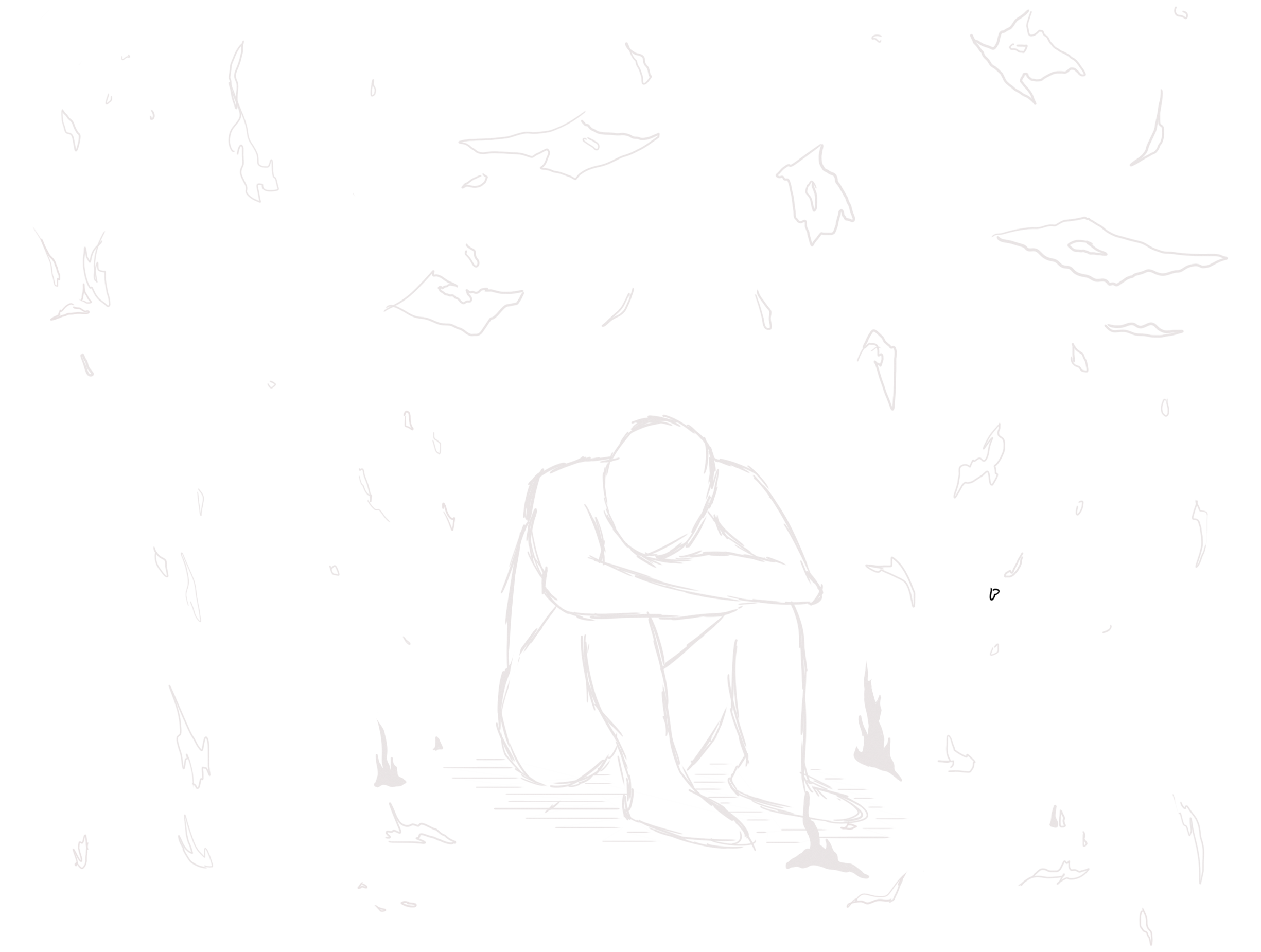Weinberg second-year Colin Brennan is no stranger to a heavy workload. In high school, he felt pressured to maintain above a 98% in all his classes so he could keep up with competitive class rankings. But when school let out for the summer, Brennan found that he wasn’t enjoying his free time like other students might.
“I would literally just lay in bed for five hours straight,” he says. “I wouldn’t be on my phone. I wouldn’t be watching TV. I would literally just be laying with my eyes closed because it was like I could finally breathe.”
When he got to Northwestern, Brennan took on a workload that rivaled what he was doing in high school.

“Last quarter, I did five classes, I was in a club, I was doing research and I was also doing work-study,” Brennan says. “I would explain this to some people, and they literally wouldn’t bat an eye.”
The stress from Brennan’s work in Winter Quarter resulted in feelings of dread that negatively impacted his learning and relationships. He recalls being so drained that he didn’t want to open his phone to respond to texts from his parents or friends.
This pressure and isolation are symptoms of burnout, built up over time as deadlines approach and more work looms. While students experiencing burnout may feel alone, it’s a more widespread phenomenon than some realize.
According to a 2021 survey by the American College Health Association, about 50% of students polled experienced moderate stress within the previous 30 days while another 30% experienced severe stress. Another study at The Ohio State University found the percentage of Ohio State students who were burnt out rose from 40% in August 2020 to 71% in April 2021.
Burnout isn’t just a trend for stressed college students — it’s a medically recognized phenomenon.
THE SCIENCE BEHIND BURNOUT
As of 2022, the World Health Organization describes occupational burnout in its International Classification of Diseases as a “syndrome conceptualized as resulting from chronic workplace stress that has not been successfully managed.”
While therapists and other medical professionals can assist students dealing with burnout, Northwestern assistant professor of psychiatry and behavioral sciences Paul Pendler, who has a doctorate in psychology, clarifies that burnout “isn’t a proper clinical diagnosis.”
To Pendler, burnout is a result of energy depletion. He identifies cognitive, emotional and social energy as potential areas for burnout, resulting in memory difficulties, higher irritability and low sociability.
The COVID-19 lockdowns exacerbated feelings of burnout for many students, Pendler says. A lack of physical movement during virtual classes paired with the unpredictability of quarantine periods contributed heavily to feelings of anxiety. On top of this, students would experience what Pendler refers to as “numbing out,” a non-medical term for when people block out the world around them.
“[Students] would just watch aimlessly something on TV but have no memory of what they were paying attention to. They’d read texts from [their classes], but they wouldn’t remember it,” Pendler says. “That was really the result of the overload people were experiencing with anxiety about getting COVID.”
Compounding these stressors is a psychological trend Pendler has noticed: Many students refuse to acknowledge their burnout until others can spot it.

“You don’t want to admit weakness; you don’t want to admit that you’re kind of hitting a wall, so you just keep thinking, ‘Let me keep pushing through,’” Pendler says. “But what you don’t realize is that you’re being grumpy, you’re yelling at people, you’re drinking more than you should. You’re numbing yourself out. Other people will notice that before you.”
While the symptoms of burnout sound severe, Pendler offers a solution. Methodically putting energy into something you enjoy doing rather than something you have to do can create what psychologists call “flow.”
“The more you can create structure and a rhythm for yourself, the more likely that you can also fight past feeling overly burnt out,” Pendler says.
A SHARED STRUGGLE
Brennan knew he wasn’t alone in his stress. Still, the symptoms of his burnout felt isolating.
“I was feeling this lack of motivation, these feelings of inadequacy, and I truly didn’t feel like a lot of other people were going like that,” Brennan says. “So many other people lead on like they’re able to juggle their responsibilities so well.”
Overloading on classes and extracurriculars can take its toll, particularly when the work is consistent and persists over an extended period of time.
Medill second-year Jorja Siemons says she’s felt burnt out after every quarter at Northwestern, attributing it to the University’s intense schedule.
“I think that’s kind of natural to the quarter system because you’re taking really intense workloads for a very short amount of time,” Siemons says. “Lots of my classes are humanities classes, but I still end up having papers that start at week four and continue on into finals, so there’s not a lot of time to breathe.”
Siemons, who works as an editor at The Daily Northwestern, also cited her extracurricular involvement as a source of stress that contributes to her feelings of burnout, especially in combination with her schoolwork. She dropped a class this quarter as a way to lessen the combined stress.
Because of her burnout, Siemons says she struggled to focus and get through otherwise manageable tasks.
“Burnout can look different for many different types of people, but for me, it was a lot of mental exhaustion,” Siemons says. “Thinking really critically all the time about school, about my life, about my work — that stuff piles up.”
While mental fatigue is one of the more common symptoms of burnout, it can also manifest physically. Weinberg third-year Niko DiStefano started to feel burnout last fall after he took the organic chemistry sequence over the summer.
Going from his summer classes directly into Fall Quarter, DiStefano says his burnout manifested as a consistent pressure in his sinuses.
“It just felt like that constantly,” he says. “Your head just kinda hurts, honestly. Where you know you can’t get any more information in, so you have to stop and do something else. I just don’t want to work anymore.”
As a pre-med student who transferred this year, DiStefano felt that he needed to take the sequence over the summer to avoid falling behind his peers. Medical schools look for research experience, clinical hours and volunteering, he says. These expectations made it difficult to allow himself to rest.
“You don’t want to admit weakness; you don’t want to admit that you’re kind of hitting a wall, so you just keep thinking, ‘Let me just keep pushing through.’”
- Paul Pendler, assistant professor of psychiatry and behavioral sciences
“Once you take [a] break, you feel like you’re falling behind everyone else,” he says. “It becomes a vicious negative cycle just to feel like you’re doing the same as your friends.”

Like DiStefano, Weinberg fourth- year Madison L., who asked to remain partially anonymous, went through burnout as a result of being on the pre-med track and an intense workload that she struggled to balance.
Madison spent the majority of her weekends studying in the library. At a certain point, the time she took away to eat dinner was her only respite from academic pressures. She was in “survival mode,” she says.
“I didn’t see my friends for long periods of time. I didn’t maintain the usual emotional support from friends [and] family,” Madison says.
The consequences of Madison’s burnout extended into other areas of her life. She experienced both physical and mental health repercussions.
Often, she couldn’t even find the time to go to the dining hall for meals.
“The biggest feeling was just exhaustion and also a sense of isolation and loneliness,” Madison says. “I’m very extroverted by nature, and being in the library is not exactly conducive to being extroverted.”
For some students, burnout can take several quarters to set in. For others, the shift is more sudden. McCormick first-year Ashley Brobbey started to feel burnt out midway through this past Winter Quarter — not even two full quarters into her Northwestern experience.
“Fall Quarter was a whirlwind of fun, and it was still new and exciting, being in college, so I didn’t really feel the burnout as much,” Brobbey says. “But then once I got to Winter Quarter and classes started getting a lot more challenging, by midterm season — and the weather also didn’t help — it got a lot easier to feel burnt out.”
Like DiStefano and Madison, Brobbey is on the pre-med track. She says part of the reason she burnt out last quarter was because of the content of her classes.
“It was math and chemistry and this [Design Thinking and Communication] course and an engineering analysis class, and it was just problem set after problem set,” Brobbey says. “It wasn’t fun in any way. It wasn’t interesting.”
After realizing that she wasn’t enjoying her classes, Brobbey decided to “pick pre-med over engineering” and will likely transfer out of McCormick.
Medill third-year Olivia Yarvis suffered from burnout last winter because of the numerous commitments she took on — four classes, an internship and a high-level editing position at a student publication — because she felt she needed to keep up with her peers.
“Northwestern, in my opinion, just has this culture where everyone feels that they have to be doing everything, and if you’re not, then you just feel like you’re lesser than,” she says.
Yarvis thinks that culture is especially prevalent within Medill.
“You get there and everyone already has so many clips, or they’re working at CNN or something like that. Coming as someone with none of that, I was like, ‘Huh, OK, let me try to catch up,’” she says. “No one else had that experience. It was kind of just all in my head.”
“Northwestern, in my opinion, just has this culture where everyone feels that they have to be doing everything, and if you’re not, then you just feel like you’re lesser than.”
- Olivia Yarvis, Medill third-year
REACHING A BREAKING POINT
Last quarter, McCormick first-year Anthony Rematt had to quarantine in 1835 Hinman after testing positive for COVID. His stay in Hinman gave him plenty of time to catch up on homework — and to question whether everything he was doing was worth it.
“I had so much time to think about my actions,” he says. “To see, ‘Do I actually like what I’m doing?’ And I was like, ‘No, you’re literally so sad right now. Your grades are so bad. I was struggling so much. It was affecting my mental health.”
He says the engineering curriculum makes assumptions about knowledge that he doesn’t have, which sets him behind his peers.
“In high school, I wasn’t STEM-focused, I was more humanities-focused,” Rematt says. “I couldn’t take the time to learn the actual material.”
During his time in Hinman, Rematt decided to drop one of his engineering classes and started to consider transferring out of McCormick entirely.
After being sent home due to COVID at the end of Winter Quarter of her second year, Madison was able to talk through her feelings of burnout with her dad.

“He asked me questions like, ‘Is this actually making you happy? Is this sustainable? Can you keep living like this without having regrets years in the future?’” Madison says.
The conversation caused Madison to take a step back and consider whether she wanted to continue on the pre-med track.
“I eventually decided that I did — but also that I would need to set better boundaries with work-life balance in the future,” she says.
At the end of Winter Quarter, Brobbey realized that balancing engineering and pre-med coursework, as well as her extracurriculars, was not feasible. She decided to make some changes in her life, starting with looking at transferring to Weinberg.
Although DiStefano has recognized his burnout, he’s struggled to effectively deal with it in the looming shadow of the Medical College Admission Test (MCAT).
“I tried to get better with my time management so that I wasn’t doing as much,” DiStefano says. “That didn’t really work because now I’m studying for the MCAT. So, it’s kinda just like, no break.”
MOVING FORWARD
While DiStefano sees finishing the MCAT as an end to much of his stress, other students living through burnout have to find ways to stave it off as they continue their time at Northwestern.
Siemons realized that the nonstop mentality that she had coming into her sophomore year wasn’t sustainable.
“This is a marathon, not a sprint,” Siemons says. “I think there’s ample time in college to achieve your goals. And it doesn’t always have to be in the form of one quarter or one week, or even one year.”
There is no single solution to burnout that works for every student. However, many have found management strategies that help them cope with the pressures of their intense workloads.
For Siemons, the keys are physical activity and setting goals.
“I picked up running,” Siemons says. “It was a great stress reliever and a way to get my endorphins going and get my mind off things. Additionally, I started saying no to little things that I could say no to, [like] picking up an extra assignment or picking an extra story, really scaling back.”
Yarvis, a self-described perfectionist, adjusted her mindset toward academic rigor in order to build a healthy relationship with school. She lightened her workload and quit her student publication.
“Recognizing that I am trying my hardest and that’s good enough was one of the mindset changes I had to make to be able to get through,” Yarvis says.
Brennan has found success by drawing strict boundaries between when he works and when he doesn’t.
“I’m gonna set a time every day where I’m just like, ‘No more work is getting done,’” he says. Before he implemented this rule, Brennan would often sit in University Library and work until it closed — on most nights, that’s 2 a.m.
Working with friends has also helped Brennan to stay motivated and overcome his perfectionist tendencies.
Smaller-scale solutions like these can work for some students, but others need to make larger changes. For Rematt, this meant dropping a class; for Brobbey, it meant transferring out of McCormick.
Madison says that speaking with a professional was helpful in working through her burnout.
“I’ve always been the kind of person who’s like, ‘I can handle this on my own. I don’t need to talk to somebody else about my feelings,’” she says. “But I decided that enough was enough. I did see a therapist for the first time last summer, and that’s actually been extremely monumental.”

After coming to terms with her burnout, Madison decided she wanted to help others who were struggling with mental health issues. At the height of the pandemic, she joined Crisis Text Line, a volunteer-based resource that provides free mental health support. When she returned to campus, Madison joined the Northwestern chapter of Active Minds, a national non-profit student group that promotes ending the stigma about mental health on college campuses.
Conversations that she had in Active Minds helped Madison understand some of the negative tendencies that she had developed.
“People would say something like, ‘Oh yeah, I’ve skipped meals because I’ve been too busy,’” Madison says. “That clicked in my head that what I was doing was the exact same thing, and because they thought it was not good, then it must actually not be good. That kind of rewired the neural networks in my brain to see reality.”
The best advice she can give to those experiencing burnout is to evaluate whether their choices will lead to their desired outcome — and whether that outcome is worth it.
“No grade is worth sacrificing your mental health, because it takes a lot of time to get back on track,” Madison says.
